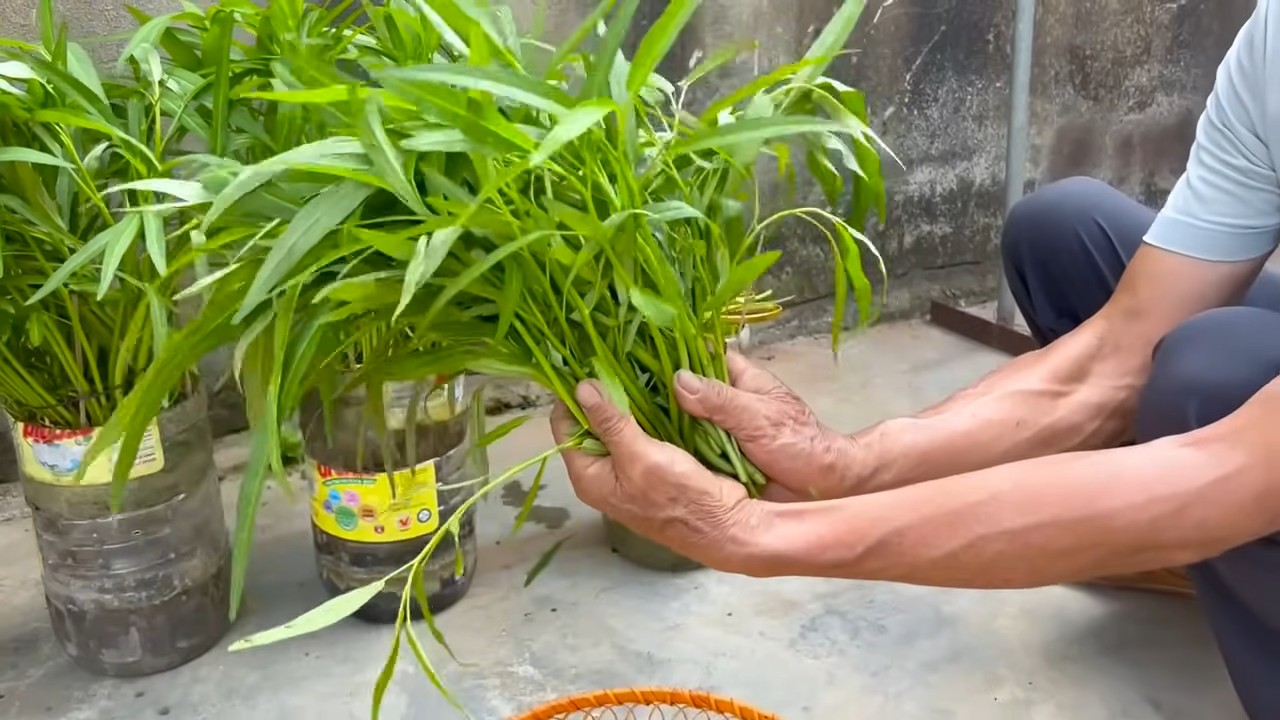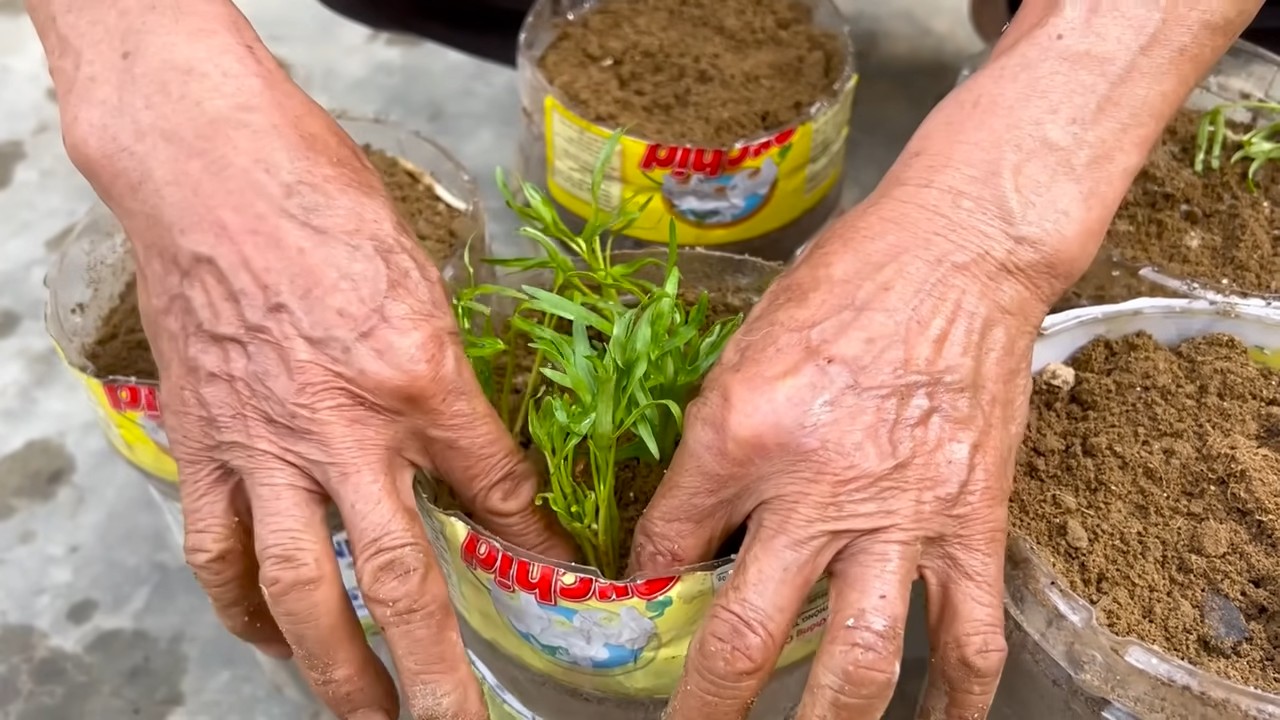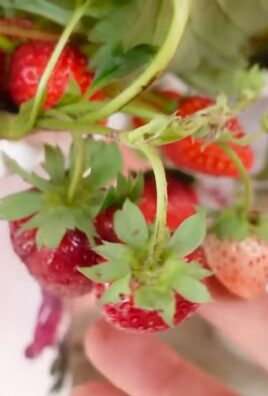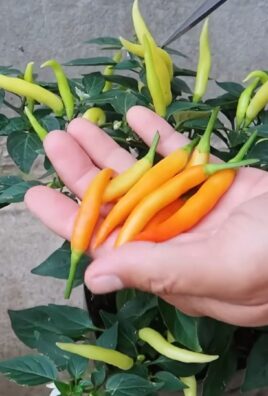Waterless vegetable gardening might sound like an oxymoron, right? But what if I told you that you could cultivate a thriving garden, bursting with fresh, delicious vegetables, all while drastically reducing your water consumption? Imagine the satisfaction of harvesting your own bounty, knowing you’re also being incredibly kind to the planet.
For centuries, resourceful gardeners in arid regions have developed ingenious techniques to coax life from the driest landscapes. Think of the ancient terraced gardens of the Incas, or the ingenious water harvesting methods employed in the Middle East. These traditions, born out of necessity, highlight the enduring human ingenuity in adapting to challenging environments. Today, as water scarcity becomes an increasingly pressing global issue, these time-tested methods are more relevant than ever.
Let’s face it, watering your garden can be a real chore, not to mention a drain on your wallet and a potential waste of precious resources. Many of us struggle to find the time, or simply forget, leading to wilted plants and disappointing harvests. That’s where waterless vegetable gardening comes in! This DIY guide will equip you with simple, effective tricks and hacks to minimize your watering needs, maximize your yields, and create a truly sustainable and beautiful garden. Get ready to unlock the secrets to a flourishing garden, even when water is scarce!

DIY Waterless Vegetable Gardening: A Guide to Thriving with Minimal Irrigation
Hey there, fellow gardeners! Are you tired of constantly lugging around watering cans or worrying about your vegetable garden drying out during those scorching summer months? Well, I’ve got some fantastic news for you: you can absolutely grow a thriving vegetable garden with minimal to no watering! It’s all about choosing the right techniques and plants. Let’s dive into the wonderful world of waterless vegetable gardening!
Understanding the Principles of Waterless Gardening
Before we get our hands dirty, let’s understand the core principles that make waterless gardening possible. It’s not about neglecting your plants; it’s about creating an environment where they can access and retain moisture efficiently.
* Soil Health is Key: Healthy soil acts like a sponge, holding onto water and nutrients. We’ll focus on building soil rich in organic matter.
* Mulching is Your Best Friend: Mulch acts as a protective blanket, reducing evaporation and suppressing weeds (which compete for water).
* Plant Selection Matters: Some vegetables are naturally more drought-tolerant than others. Choosing the right varieties is crucial.
* Water Harvesting (Optional, but Helpful): Even in a waterless garden, collecting rainwater can provide a supplemental source of moisture during extreme dry spells.
* Strategic Planting: Grouping plants with similar water needs and providing shade can minimize water loss.
Choosing the Right Vegetables
Not all vegetables are created equal when it comes to water needs. Here are some of my favorite drought-tolerant veggies that thrive with minimal irrigation:
* Tomatoes (especially determinate varieties): Look for varieties like Roma, Celebrity, or San Marzano. Once established, they can handle dry conditions surprisingly well.
* Peppers (especially hot peppers): Jalapeños, habaneros, and other hot peppers are naturally drought-tolerant.
* Eggplant: This Mediterranean native is surprisingly resilient to dry conditions.
* Squash (especially winter squash): Butternut, acorn, and spaghetti squash are excellent choices.
* Beans (especially lima beans and cowpeas): These legumes are nitrogen-fixers, which also helps improve soil health.
* Okra: This Southern staple is incredibly heat and drought-tolerant.
* Sweet Potatoes: These root vegetables are very efficient at finding water deep in the soil.
* Herbs (many varieties): Rosemary, thyme, oregano, sage, and lavender are all drought-tolerant herbs.
* Greens (some varieties): Spinach and kale, once established, can tolerate drier conditions than lettuce.
Building Your Waterless Garden: Step-by-Step Guide
Okay, let’s get down to the nitty-gritty! Here’s how to create your own waterless vegetable garden:
Phase 1: Soil Preparation
This is arguably the most important step. Healthy soil is the foundation of a successful waterless garden.
1. Clear the Area: Remove any existing grass, weeds, rocks, or debris from your garden bed. I like to use a garden fork to loosen the soil.
2. Amend the Soil with Organic Matter: This is where the magic happens! Add generous amounts of compost, well-rotted manure, leaf mold, or other organic materials to your soil. Aim for at least 4-6 inches of organic matter.
* Why is this important? Organic matter improves soil structure, increases water retention, and provides essential nutrients for your plants.
3. Incorporate the Amendments: Use a garden fork or tiller to thoroughly mix the organic matter into the existing soil. You want to create a loose, crumbly texture.
4. Consider Raised Beds (Optional): Raised beds can improve drainage and soil quality, especially in areas with heavy clay soil. If you’re building raised beds, fill them with a mixture of topsoil, compost, and other organic amendments.
5. Soil Testing (Recommended): A soil test can tell you the pH level and nutrient content of your soil. This will help you determine if you need to add any additional amendments, such as lime (to raise pH) or fertilizer.
Phase 2: Planting and Mulching
Now that your soil is prepped, it’s time to plant your drought-tolerant vegetables and protect them with a generous layer of mulch.
1. Choose Your Plants: Select the drought-tolerant vegetables that you want to grow, keeping in mind your local climate and growing season.
2. Planting Time: Plant your vegetables according to the recommended spacing and depth for each variety. Be sure to water them thoroughly at planting time to help them establish their roots.
3. Mulch, Mulch, Mulch!: Apply a thick layer of mulch around your plants. I recommend using organic mulches like straw, wood chips, shredded bark, or compost. Aim for a layer that is 3-4 inches thick.
* Why is mulching so important? Mulch helps to retain moisture in the soil, suppress weeds, regulate soil temperature, and add organic matter as it decomposes.
4. Water Wisely (Initially): Even though you’re aiming for a waterless garden, it’s important to water your plants regularly for the first few weeks after planting to help them establish their roots. Once they are established, you can gradually reduce watering.
5. Consider Companion Planting: Companion planting involves growing different plants together that benefit each other. For example, planting basil near tomatoes can help to repel pests.
Phase 3: Ongoing Maintenance
Maintaining a waterless garden requires a bit of ongoing effort, but it’s well worth it in the long run.
1. Weed Regularly: Weeds compete with your vegetables for water and nutrients, so it’s important to remove them regularly. Hand-pulling weeds is the best option, as it avoids disturbing the soil.
2. Monitor Your Plants: Keep an eye on your plants for signs of stress, such as wilting or yellowing leaves. If you notice any problems, try to identify the cause and take corrective action.
3. Add More Mulch as Needed: As the mulch decomposes, you’ll need to add more to maintain a thick layer.
4. Water Deeply (If Necessary): Even in a waterless garden, there may be times when you need to water your plants, such as during prolonged droughts. When you do water, water deeply and infrequently, rather than shallowly and frequently. This will encourage your plants to develop deep roots, which will make them more drought-tolerant.
5. Harvest Regularly: Harvesting your vegetables regularly will encourage them to produce more.
Tips and Tricks for Success
Here are a few extra tips and tricks that I’ve learned over the years that can help you create a thriving waterless vegetable garden:
* Choose the Right Location: Select a location that receives at least 6-8 hours of sunlight per day.
* Consider Microclimates: Microclimates are small areas within your garden that have different environmental conditions than the surrounding area. For example, a south-facing wall will be warmer and drier than a north-facing wall. Use microclimates to your advantage by planting drought-tolerant vegetables in the warmer, drier areas and more water-loving vegetables in the cooler, shadier areas.
* Use Ollas: Ollas are unglazed clay pots that are buried in the soil and filled with water. The water slowly seeps out of the pot and into the surrounding soil, providing a constant source of moisture for your plants.
* Collect Rainwater: Even if you’re aiming for a waterless garden, collecting rainwater can provide a supplemental source of moisture during dry spells. You can collect rainwater in rain barrels or other containers.
* Observe and Adapt: Pay attention to your garden and learn from your mistakes. Every garden is different, so what works for one person may not work for another. Be willing to experiment and adapt your techniques as needed.
Troubleshooting Common Problems
Even with the best planning, you might encounter some challenges along the way. Here are a few common problems and how to address them:
* Wilting Plants: Wilting can be caused by a variety of factors, including lack of water, heat stress, or disease. Check the soil moisture level to determine if your plants need water. If the soil is moist, the wilting may be caused by heat stress or disease. Provide shade for your plants during the hottest part of the day and treat any diseases as needed.
* Yellowing Leaves: Yellowing leaves can be a sign of nutrient deficiency, overwatering, or disease. Check the soil pH and nutrient levels to determine if your plants need fertilizer. Avoid overwatering and treat any diseases as needed.
* Pest Problems: Pests can be a major problem in any garden. Use organic pest control methods, such as hand-picking pests, using insecticidal soap, or introducing beneficial insects.
* Weed Infestation: Weeds can quickly take over a garden if they are not controlled. Mulch helps to suppress weeds,

Conclusion
So, there you have it! Waterless vegetable gardening isn’t just a trendy buzzword; it’s a practical, sustainable, and incredibly rewarding way to grow your own food, even in challenging climates or with limited resources. We’ve explored the core principles, the key techniques, and the undeniable benefits of embracing this innovative approach.
But why is this DIY trick a must-try? Because it empowers you to become a more resilient and resourceful gardener. It frees you from the constant worry of watering schedules, reduces your environmental impact, and ultimately connects you more deeply with the natural cycles of growth. Imagine the satisfaction of harvesting a bountiful crop of vegetables, knowing that you achieved it with minimal water input and maximum ingenuity.
Beyond the core methods we’ve discussed, there’s ample room for experimentation and personalization. Consider these variations to tailor waterless vegetable gardening to your specific needs and preferences:
* **Vertical Waterless Gardens:** Adapt the principles to vertical structures using recycled materials like plastic bottles or pallets. This is perfect for small spaces and adds a unique aesthetic element to your garden.
* **Keyhole Gardens:** These raised beds, shaped like a keyhole, allow easy access to all parts of the garden from a central point, making planting, weeding, and harvesting a breeze. They also promote efficient composting within the bed.
* **Hugelkultur Beds:** These raised beds are built on a foundation of decaying wood, which acts like a sponge, retaining moisture and slowly releasing nutrients over time. They are ideal for areas with poor soil quality.
* **Companion Planting:** Strategically pair plants that benefit each other. For example, planting basil near tomatoes can deter pests and improve tomato flavor, reducing the need for interventions.
* **Seed Saving:** Collect seeds from your most successful waterless vegetable gardening crops to ensure you have a supply of resilient seeds adapted to your local conditions. This further reduces your reliance on external resources.
Remember, the key to success with waterless vegetable gardening is observation and adaptation. Pay close attention to your plants, your soil, and your local climate. Don’t be afraid to experiment and adjust your techniques as needed. The more you learn, the more successful you’ll become.
We wholeheartedly encourage you to give this DIY trick a try. Start small, perhaps with a single raised bed or a few containers. Choose drought-tolerant varieties that are well-suited to your region. And most importantly, have fun!
We’re eager to hear about your experiences with waterless vegetable gardening. Share your successes, your challenges, and your innovative solutions in the comments below. Let’s build a community of resourceful gardeners who are committed to sustainable food production. Together, we can create a more resilient and abundant future.
FAQ
What exactly is waterless vegetable gardening, and how is it different from traditional gardening?
Waterless vegetable gardening is a method of growing vegetables with minimal or no supplemental watering after the initial establishment phase. It relies on techniques like soil preparation, mulching, drought-tolerant varieties, and water harvesting to conserve moisture and create a self-sustaining ecosystem. Traditional gardening, on the other hand, often involves regular watering, fertilization, and pest control, which can be resource-intensive. The core difference lies in the emphasis on building a resilient system that minimizes external inputs.
What types of vegetables are best suited for waterless vegetable gardening?
Many vegetables can thrive in a waterless garden, especially if you choose drought-tolerant varieties. Some excellent choices include:
* **Tomatoes:** Select varieties like Roma, San Marzano, or cherry tomatoes, which are known for their resilience.
* **Peppers:** Jalapeños, bell peppers, and other pepper varieties can tolerate dry conditions once established.
* **Eggplant:** Choose varieties like Black Beauty or Japanese eggplant, which are relatively drought-tolerant.
* **Squash:** Zucchini, butternut squash, and other squash varieties are well-suited for waterless gardening.
* **Beans:** Bush beans and pole beans are generally drought-tolerant.
* **Greens:** Spinach, kale, and chard can tolerate dry conditions, especially if shaded during the hottest part of the day.
* **Herbs:** Rosemary, thyme, oregano, and lavender are all drought-tolerant herbs that thrive in waterless gardens.
Remember to research varieties that are specifically adapted to your local climate and soil conditions.
How do I prepare the soil for waterless vegetable gardening?
Soil preparation is crucial for success. Here’s a step-by-step guide:
1. **Amend the soil:** Incorporate plenty of organic matter, such as compost, well-rotted manure, or leaf mold. This will improve water retention, drainage, and nutrient availability.
2. **Consider soil type:** If you have sandy soil, which drains quickly, add clay or bentonite to improve water retention. If you have clay soil, which drains poorly, add sand or perlite to improve drainage.
3. **Mulch heavily:** Apply a thick layer of mulch, such as straw, wood chips, or shredded leaves, around your plants. This will help to conserve moisture, suppress weeds, and regulate soil temperature.
4. **Consider hugelkultur:** Building hugelkultur beds is an excellent way to create a water-retentive and nutrient-rich growing environment.
How often should I water my waterless vegetable garden?
The goal is to minimize watering after the initial establishment phase. Water thoroughly when planting seedlings or seeds. After that, water only when the soil is dry to the touch several inches below the surface. Use a soaker hose or drip irrigation to water deeply and efficiently, targeting the roots of the plants. Avoid overhead watering, which can lead to fungal diseases. Monitor your plants closely for signs of stress, such as wilting or yellowing leaves, and adjust your watering schedule accordingly. In some cases, you may not need to water at all after the plants are established, especially if you have amended the soil properly and mulched heavily.
What are some common challenges of waterless vegetable gardening, and how can I overcome them?
Some common challenges include:
* **Weed control:** Weeds compete with your vegetables for water and nutrients. Mulch heavily and weed regularly to keep them under control.
* **Pest and disease management:** Choose disease-resistant varieties and practice good sanitation to prevent problems. Use organic pest control methods, such as insecticidal soap or neem oil, if necessary.
* **Soil fertility:** Monitor your soil fertility and amend it as needed with compost or other organic fertilizers.
* **Climate extremes:** Protect your plants from extreme heat or cold with shade cloth or row covers.
* **Initial establishment:** Getting plants established in a waterless system can be tricky. Ensure adequate watering during the first few weeks and choose strong, healthy seedlings.
Can I use rainwater harvesting in conjunction with waterless vegetable gardening?
Absolutely! Rainwater harvesting is an excellent way to supplement your water supply and further reduce your reliance on municipal water. Collect rainwater in barrels or tanks and use it to water your garden during dry spells. This is a sustainable and environmentally friendly way to conserve water.
How do I know if my waterless vegetable garden is successful?
Success in waterless vegetable gardening is measured by the health and productivity of your plants, as well as the overall sustainability of your garden. Look for signs of vigorous growth, abundant yields, and minimal pest and disease problems. Also, consider the amount of water you’re saving and the overall environmental impact of your gardening practices. Remember that waterless vegetable gardening is a journey, not a destination. Be patient, persistent, and willing to learn from your experiences.




Leave a Comment